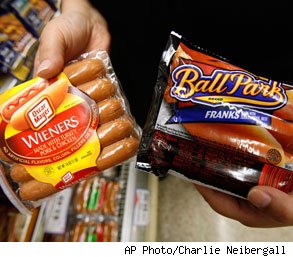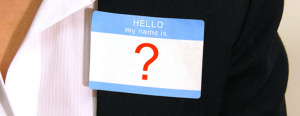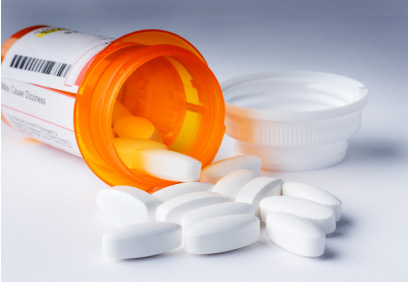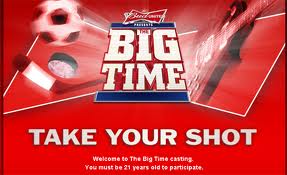What is Brand Awareness?
For any brand or product to survive and succeed they must earn a level of brand awareness that is greater than or at least equal to their competition.
But what exactly is brand awareness and how does a product or brand generate this level recognition?
Brand Awareness (n.): a measure of how readily members of a target audience remember a commercial brand, what it is about, and their level of trust in the brand. The proportion of target customers that recall a brand. (source: dictionary.com)
Determining brand awareness is a primary goal of marketing or advertising departments as it is a reliable indicator and measuring stick for the success of their strategies and tactics.
And there are three primary levels of awareness that can be used to measure marketing and advertising success:
1. Aided Awareness: Recognition of a specific brand or product from a list of possible
names offered as a prompt.
2. Unaided Awareness: Recognition of a specific brand or product without being
prompted with possible names.
3. Top of Mind: Highest level of awareness, the brand dominates the mind and pops up
first whenever applicable
For obvious reason awareness has a high correlation to purchasing habits; if a company creates an awesome product but no one has ever heard of it no one will buy it. Let's face it humans are creatures of habit and rarely stray far from the path when making purchasing decisions. We like what we know. But gaining a high level of awareness is more than throwing your brand's name in everyone's face, you must also back up the awesome logo, flashy packaging, and advertising with a quality product or the awareness you've built as a brand will only last so long.
While there are many ways to increase exposure and awareness some of the most tried and true tactics include:
• Publicity via brand related stories/articles
• Direct marketing
• A strong web presence (both in search engines and social media)
• Word of mouth marketing
• Strong presence at tradeshows and industry events (particularly for B2B sales)
• Consistent brand message throughout all touch points
Is Co-Branding a Risk to Your Brand?
Betty Crocker's brownies mix + Hershey's Chocolate Syrup; Dell Computers + Intel Processors; Kraft Lunchables + Oscar Meyer meat, Nike + Michael Jordan.
These aren’t just tasty treats, fancy computers, or the latest pair of sneakers. These are all examples of successful co-branding efforts, which is a branding strategy that aligns two separate brands with one product.
There are many advantages to a co-branding a product, as well as a few risks. But what successful business venture doesn’t come with risks? Here are a few things to consider when deciding if co-branding is right for you:
Advantages of co-branding:
1. A powerful way to introduce one brand's loyalists to the other
2. Cost Effective: A great example of this would be brands like Dunkin Donuts & Baskin Robbins who
typically share the same building, the same staff, even the same registers and counter space. Not only
are the saving money by joining their real estate but because the traffic for these two brands don’t
generally coincide it guarantees steady foot traffic throughout the day.
3. Shared product development & marketing
4. They say two heads are better than one? Well, same goes for brands. If there are two brand names
associated with a product the buzz around it will surely be much louder than if one brand was going at
a new product launch alone.
Disadvantages of co-branding:
1. Co-branding can dilute a product because the positive experience a consumer has with the product is
now spread across two brands whereas normally one brand can claim all the glory
2. Similarly, if there is a negative experience with the product that negativity is now associated with two
brands and the damage is not limited to one company.
3. No one can deny that one brand is going to be seen as secondary or weak compared to the other…but
will it be your brand? Or the other?
What is Nation Branding?
Canada, South Korea and Tanzania all walk into a marketing agency...no this isn't a bad joke. It's nation branding. While candy bars, soft drinks and sneakers are brands commonly seen advertised, countries are now branding themselves like products on a shelf.
Nation branding is a practice which aims to measure, build and manage the reputation of countries. In the late 1990s Simon Anholt, a pioneer in the field, first argued that places and nations themselves are brands.
When you buy a Kate Spade purse you're not just buying a handbag. You're buying an experience, recognition and all of the associations that come with the Kate Spade name. According to Anholt's research, nation branding works the same way.
For example, if deciding between a product made in Mexico and a product made in Japan, which would you choose and why? Countries have reputations. The way a country is perceived globally impacts much more than your next vacation. It can significantly impact varying aspects of a country's economic landscape.
While nations have had reputations for centuries those reputations become increasingly important in our global marketplace and nations are trying to control them more than ever.
So just how do you brand a nation? Some tourism boards air commercials, while others develop catchy slogans. But nation branding is so much more than an advertisement. It means consistent policies and making sure that government agencies are in alignment and really living the brand.
Like any other type of branding, nation branding can swing two ways: Positive brands can stick for a long time, but once a country is "branded" negatively it can be very difficult to undo the damage. Unlike a consumer product, a damaged Nation brand could have a much more severe consequence than lagging 4th quarter sales.
Nice Package: 5 Tips for a Great Package Design

As "the hot dog wars" battle on between Sara Lee Corporation and Kraft Food Inc. in a Chicago courtroom over misleading package designs, I think it's time to take a deeper look into packaging and why it is important enough for these two companies to battle it out in court.
While a brand must employ a successful strategy throughout many different touch points including advertising, identity, and web presence, it is packaging that could most directly have an impact on a brand's sale. No longer is a product's package merely a means of protection during transport from point A to point B, but an increasingly important factor in product's success. A well-marked package will get a customer to pick up a product and take a closer look, which ultimately puts you one step closer to making that sale. This is why it is so important to have an interesting and compelling package design.
Kristin Everidge, Manager of Visual Branding at Addison Whitney, says "People are drawn to products with interesting packages because it suggests that what's inside is equally appealing or different." Package design can enhance a brand through unique structures, sustainable materials, cross promoting other products and building brand awareness through shelf displays and planograms that wow consumers during their weekly shopping trips.
Packaging is a vehicle that reflects the product's brand and image. To ignore the importance of packaging in today's market is your own product's death. Package design should be a continuous investment to evolve with the ever changing world that is packaging.
But what makes a great design? I asked Kristin and these are her top five elements of a great package design (in no particular order):
- 1. Shelf Presence/ability to grab attention quickly
2. Effective informational hierarchy
3. Inspiring materials and structure
4. Functionality
5. Clean & crisp design (images, typography, and functional information)
So do you think you're immune to the power of package design? I think the real answer would surprise you, next time you're shopping the aisles of your local Target, take note of the products you grab and how compelling their designs are compared to the products you left behind…
Who is Messing with your Brand?
First, what do I mean by “messing with”? Of course, the term itself implies change and maybe change in an impulsive or irresponsible manner. While altering something as important of an asset as your brand is wildly inappropriate, we have to acknowledge it is happening all the time.
“Messing with” can happen when different people at various exchange points give their own spin to a brand’s strategic positioning. This could be done consciously or unconsciously, and it could happen through an honest lack of knowledge of your brand’s strategic intent or through sheer boredom with repeating the strategy over and over.
Being "messed with" can go way beyond verbal or written contact. It could be accidental or habitual behavior that is inconsistent with or, worse still, misrepresents the brand’s goals, values or critical differentiating attributes.
It could be a lot of little things that erode a brand over a period of time. They can be slow to be detected or a clear philosophical departure from the strategy that a well-design internal study could surface.
But where is this happening?
Well, how thoroughly have you dissected and identified all the touch points customers, prospects and employees have with your brand on a daily basis? Are you truly conscious and attentive to what is happening there?
A short list of possible touch points would include:
- • All possible points of inquiry about your Brand
1. Web site, advertising, PR
2. Referrals, word-of-mouth, social media
• All installation, service or maintenance contact
• All call center exchanges, whether service or billing related
• Written or common usage policies concerning:
1. Exchanges
2. Returns
3. Usage support
• Retail or distributor displays and policies
• Employee assumptions about the brand’s strengths and weaknesses
1. In product development (R&D)
2. In market development (sales)
3. In operations management (manufacturing or backroom support)
In truth, anyone in the company who does not understand the strategy behind your brand can produce a possible negative impact on the brand. It could surface in how they think, make decisions, supply information or interact internally. Ultimately, the finished product or a customer-facing exchange will reflect their assumptions or beliefs.
But whose responsibility is it to tune in?
Tuning into how your brand is represented throughout the organization and at all external purchase or service opportunities should always be a critical part of the entire brand team’s responsibility.
Paying attention to your brand requires a formal, concerted effort that goes well beyond just monitoring comments received in the call center or from your sales force.
These days, social media has created many more points of information and perception exchange that will be immediately and permanently linked to your brand. If executed poorly or haphazardly, your brand is again being “messed with” in a faster, potentially more impactful manner than any others that have come before. So being watchful and capturing this impact should happen on an ongoing and pre-determined basis.
In conclusion, it is important to remember that while many different people can and will interact with your brand all those that are “messing with” it ARE your brand. So be sure you help them represent and protect it, keeping it consistent and true to all you strategically need it to be.
Contributed by: Bev Brandt
Is Product Placement Still Effective?

More and more frequently when I go see a movie I feel as if I'm watching a two hour long commercial rather than the cinematic depiction of a bachelor party in Vegas. And frankly, I'm becoming a little jaded by the continuous product placement or "brand integration" as it's called now. I then started to realize I was seeing the same products in many of the movies I went to see. That in turn has made the impact of seeing my favorite actor/actress drinking my favorite soda while driving a brand new car less meaningful. Rather than believing this character would actually chose to buy those things it has made me believe that the brand just made a better offer to the production company and won out.
Product placement became popular in the 1980's and has continued to grow in popularity ever since. One of the earliest examples of product placement involves the movie E.T. and Reese's Pieces, (I know you remember the scene) so what used to be a non-traditional form of advertising is very much now the norm and doesn’t seem to be going away anytime soon. In 2010 $5.6 billion was spent on product placement, and that's more than double what was spent in 2005. One of the biggest drawls to advertisers to use product placement is the hope that consumers will develop a stronger emotional connection with the product, and the ability to target a specific group through relevant content.
But what brands are shown most often? Here are the 10 brands with the most appearances in a top film (topped the box office at least once) since 2001:
1. Ford – 152 times
2. Apple – 124 times
3. Coca-Cola – 99 times
4. Chevrolet – 86 times
5. Mercedes – 81 times
6. Budweiser -78 times
7. Sony – 72 times
8. Pepsi – 70 times
9. Nike – 67 times
10. Cadillac – 59 times
Source: brandchannel.com
To check out the rest of the list visit here, and take note of how the top product placement companies has and has not changed throughout the past 10 years. Most interesting to me is the rise of Apple on the list, and the stronghold Ford has on the top spot over the years.
11 Most Asked Pharmaceutical Branding Questions Answered
Whether you've been involved in pharmaceutical branding for years or you're new to the game sometimes the answers to the most commonly asked questions can escape you. We've we've compiled answers for the 11 most frequently asked questions surrounding pharmaceutical branding we receive today to help you with your next branding project:
What's in a Name?
Naming a company is no easy feat, and few know that better than the people that craft some of the world's best-known brands. Robert Jordan, author of book and website How They Did It, recently spoke to our president Brannon Cashion, who gave some helpful tips on what to consider when creating one of the most important features of your company. Listen below!

[powerpress url="https://media.blubrry.com/howtheydidit/p/www.htdibook.com/audio/BrannonCashionPodcast.mp3"]
Contributed by Allison Meeks
Ready for the Big Time?
Is Budweiser flexing its brand muscles because they can or do they recognize the power of their brand to help others realize their dream of making it big?
Regardless of the answer, Budweiser announced this week they are launching a reality TV show, "Bud United Presents: The Big Time." The show's premise (from a non-brand strategy point of view) is to showcase young individuals with a dream (such as becoming a pitcher or racecar driver) being mentored and coached by one of the world's best in their respective area. Budweiser is leveraging their brand relationships with sports leagues, celebrities, etc. to help young adults achieve their dreams.
For Budweiser though this is more than helping individuals reach their dreams, it is an opportunity for one of the top consumer brands to enter unchartered waters by being the first alcohol brand to sponsor a TV show. From a brand strategy standpoint Budweiser's goal is to go beyond traditional product placement, and extend their global brand platform to celebrating and anticipating great times…at the hand of Budweiser.
Budweiser sponsorships include sporting leagues, musical festivals, and even the US Military, spearheading a reality TV is certainly a new sponsorship endeavor for the major brand, and an interesting one at that. If successful, it will show that Budweiser as a brand has the ability and power to extend past their niche and touch a new market, and if successful could be compared to other major brands, like Starbucks, who recently extended past their niche and into music and food.
It is interesting to note that this announcement comes at a time in the beer industry when craft brewery sales have consistently been on the rise over the last couple years, and are slowly chipping away at Budweiser's enormous market share. Which brings me back to the question at the beginning of this post, Is Budweiser flexing its brand muscles to show others that they are still the kings of the industry, or because they recognize the power of their brand to help others realize their dream of making it big?
McMakeover

McDonald's has introduced subtle changes over the past few years such as healthier menu options and new coffee drinks. Now, the fast food chain is undergoing a $1billion dollar makeover. According to USA TODAY, McDonald's hopes to have the majority of America's 14,000 locations revamped by 2015.
Expect to sit at wooden tables or on faux leather chairs. Bright red and yellow interiors are being traded for muted yellow, orange and green palettes. Though designs vary by location, recent makeovers of select stores have included: Flat-screen TVs, adding second drive-through windows and lounge areas for diners looking to stay a while.
Another new feature seen in some locations: the golden semi-swoosh. McDonald's calls it the yellow "brow" — or half of a golden arch. Maintaining the familiar yellow design, the brow might be a sleeker, more modern approach to the famous arches.
It is unclear how consumers will react to the renovation. The new look and feel will certainly be familiar to Panera or Starbucks customers, but many Americans grew up with the classic look and could feel alienated by the drastic changes. For now, all eyes are on McDonald's. America's largest chain restaurant is redefining itself which could mean big changes in the future for other fast, casual dining competitors.


